Lab Members

Univ.-Prof. Dr. Christine Radtke
Head of the Department for Plastic and Reconstructive Surgery, Principal InvestigatorHead of the Department for Plastic, Reconstructive and Aesthetic Surgery
My research focuses on repair strategies for peripheral nerve and central nervous system regeneration, with amphasis on tissue engineering, cell transplantation, and cell replacement approaches, as well as microsurgical repair techniques.
To achieve this goal, my lab investigates glial cells and stem cells, extracellular vesicles, and functionalized biomaterials.
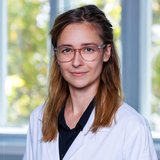
Mag. rer. nat. Tamara Weiss, PhD
PostdocMy research aims to uncover the molecular mechansism driving the plasticity of human Schwann cells in response to peripheral nerve injury and disease.
I investigate the cellular changes and functional competences of human Schwann cells during nerve regeneration and tumor development to design novel therapies for targeted Schwann cell modulation in pathologies of the peripheral nervous system.
Contact: tamara.weiss@meduniwien.ac.at
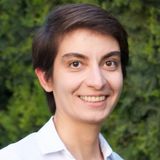
Dr.rer.nat Aida Naghilou, MSc
PostdocMy research involves characterization of native spider silk for finding a correlation between its material properties and its success in supporting peripheral nerve regeneration. I am also interested in employing spectroscopical methods for quantification of nerve regeneration. In addition, I use ultrashort pulsed lasers for precise and targeted production of functional materials with tailored properties.
Contact: aida.naghilou@meduniwien.ac.at

Dr. Jonas Eriksson
PostdocMy background is mainly in molecular and regenerative biology. My main research interests are regeneration and cell-cell fusion. Having previously worked with rat and newt animal models for regeneration, I am now turning my eyes to nerve regeneration augmented by spider silk.
Contact: jonas.eriksson@meduniwien.ac.at
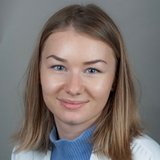
Flavia Millesi, PhD
PostdocI am interested in how biomaterials such as hydrogels and spider silk fibers affect the behavior of primary neural cells. This work in combination with detailed material characterization will identify the components and properties crucial for nerve regeneration. This allows efficient application of biomaterials and facilitates the production of synthetic alternative. I am further investigating the differences of peripheral and central nervous system glia in regard to their potential use in spinal cord injury repair using primary olfactory ensheathing cells, specialized glia cells at the border of the central and peripheral nervous system, microglia and astrocytes cultures. Within this scope, I study their phagocytic potential towards myelin and looking at myelin composition differences as a possible underlying reason for this.
Contact: flavia.millesi@meduniwien.ac.at
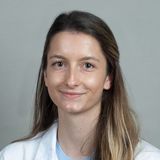
Sarah Stadlmayr, PhD
PostdocWithin the scope of my research, I try to unravel the unique properties of spider silk responsible for its exceptional ability to support peripheral nerve regeneration. I combine methods such as mass spectrometry, electron microscopy, and atomic force microscopy, with in vitro studies to determine the crucial chemical, structural, and morphological properties of spider silk.
Contact: sarah.stadlmayr@meduniwien.ac.at
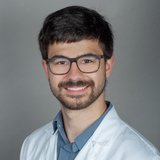
Maximilian Härtinger, MSc
PhD studentI am investigating the potential application of adipose stromal cell derived extracellular vesicles (ADSC-EVs) in peripheral nerve regeneration. My research is focused on the pro-regenerative effects of ADSC-EVs on Schwann cells and the underlying cellular and molecular mechanisms. In a current in-vitro project, the internalization and intracellular re-localization of ADSC-EVs in Schwann cells is studied with the help of high-resolution imaging methods.

Patricia Parzer, MSc
PhD studentI explore how neuroblastic tumor cells induce/sustain the repair phenotype of human Schwann cells. Furthermore, we are establishing 3D co-culture models and imaging based read outs to assess the repair functions of human Schwann cells on neuronal cells in a physiological relevant setting.
Contact: patricia.parzer@meduniwien.ac.at
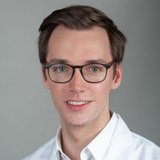
Dr. med. univ. Lorenz Semmler
PhD studentTo identify the best combination of silk-based nerve conduits and luminal guiding structures, I evaluate their performance in animal studies. In addition, I investigate novel ways to improve nerve gliding properties to treat patients suffering from carüal tunnel syndrome.
Contact: lorenz.semmler@meduniwien.ac.at

Dr. med. univ. Paul Supper
PhD studentMy main research focus lies on peripheral nerve regeneration. I investigate the pathophysiology of experimental peripheral nerve injury and its response to stem cell therapy. In order to elucidate structural and functional change, we utilize novel readout techniques in the fields of preclinical imaging, as well as electrophysiological and histomorphological assessment.
Contact: paul.supper@meduniwien.ac.at
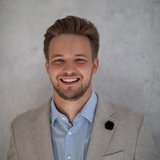
Dr. med. univ. Alexander Rührnössl
PhD StudentI am investigating spider silk as an innovative treatment for spinal cord injury. Applying my experiences with functional read outs in the rat model paired with histomorphological and molecular analyses, my aim is to assess potential functional benefits and provide insight into the underlying processes.
Contact: alexander.ruehrnoessl@meduniwien.ac.at
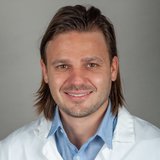
Dr. med. univ. Anton Borger
PhD StudentMy aim is to discover clinical relevant treatment options for patients with peripheral nerve injuries. I am investigating stem cell-based approaches to improve the regenerative process. Additionally, I explore extracellular vesicles derived from stem cells as a cell-free alternative.
Contact: anton.borger@meduniwien.ac.at

Dr. med. univ. Didem Ün
PhD studentSignal transduction is important for the regulation of numerous cellular functions including peripheral nerve injury response. Transporters and receptors are crucial for this process. Peripheral nerve injury triggers adaptive changes in the neuronal soma, including changes in expression of transporters and receptors. My current work focuses on understanding the role of transporters and receptors in nerve regeneration. Furthermore, I aim to explore the efficacy and the mechanism of action of various drugs that are described to promote neuroregeneration.
Contact: didem.uen@meduniwien.ac.at
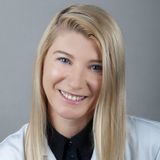
Anda-Corina Mann, BSc
Biomedical scientistMy research is targeted on the regenerative effect of low nuclear magnetic resonance therapy (NMRT) as a novel therapeutic approach for the treatment of injured peripheral nerves. I am studying the interaction of neurons and Schwann cells and the cellular and molecular mechanisms facilitating the favorable effect of NMR therapy. Additionally, I am responsible for the good laboratory organization.
Contact: anda.mann@meduniwien.ac.at
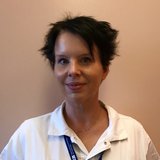
Sonja Wolf
Biomedical scientistI am specialized in variety of immunohistochemical methods to analyze the morphological changes of tissues in pathological conditions. In addition, I manage administrative tasks of the daily laboratory routine.
Contact: sonja.wolf@meduniwien.ac.at
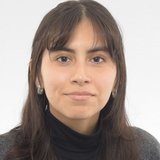
Jennifer Vildozo Vargas
Biomedical scientist
Contact: jennifer.vildozovargas@meduniwien.ac.at
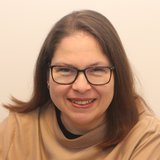
Sabine El Gazzar
Biomedical scientist
Contact: sabine.elgazzar@meduniwien.ac.at
Andreas Langa
student assistantContact: n11924392@students.meduniwien.ac.at
Stefanie Wilfinger
student assistantContact: n11933086@students.meduniwien.ac.at
Sebastian Rihl
student assistantContact: n11909310@students.meduniwien.ac.at
